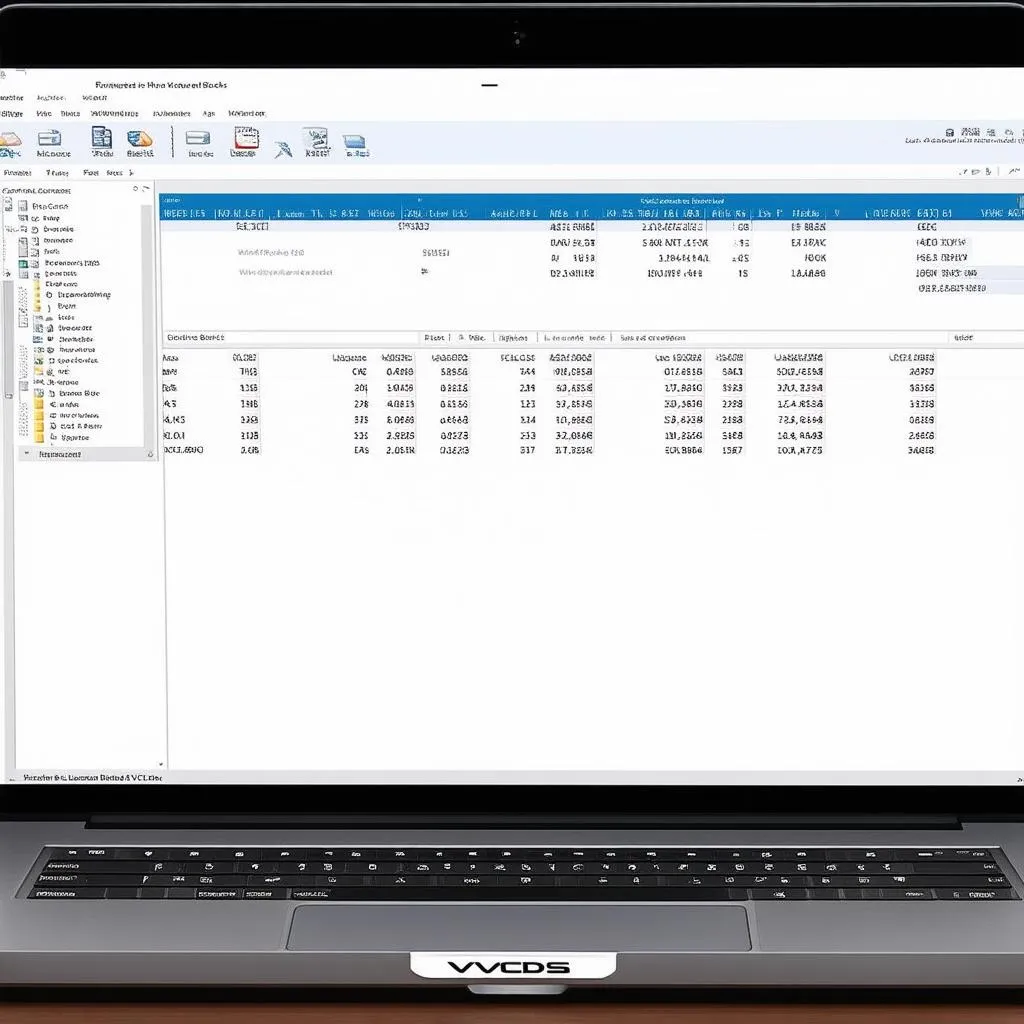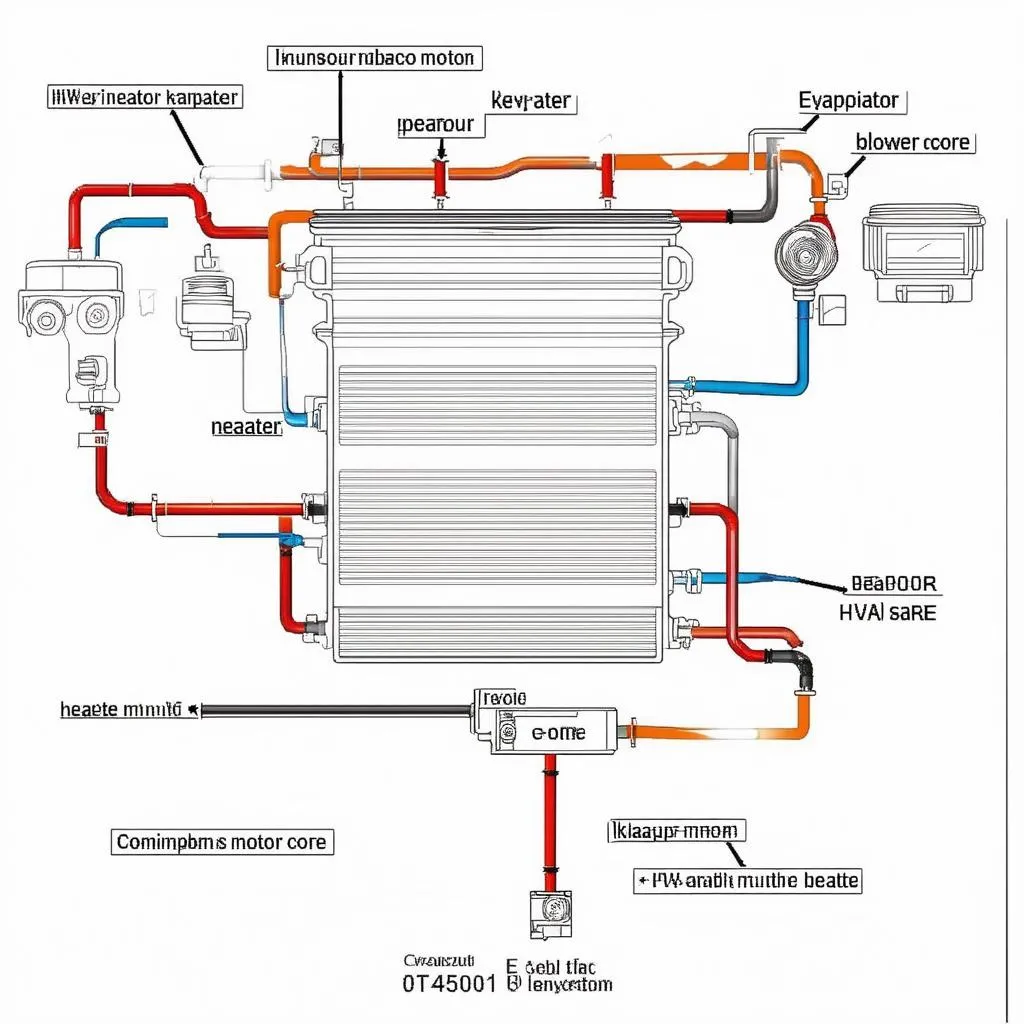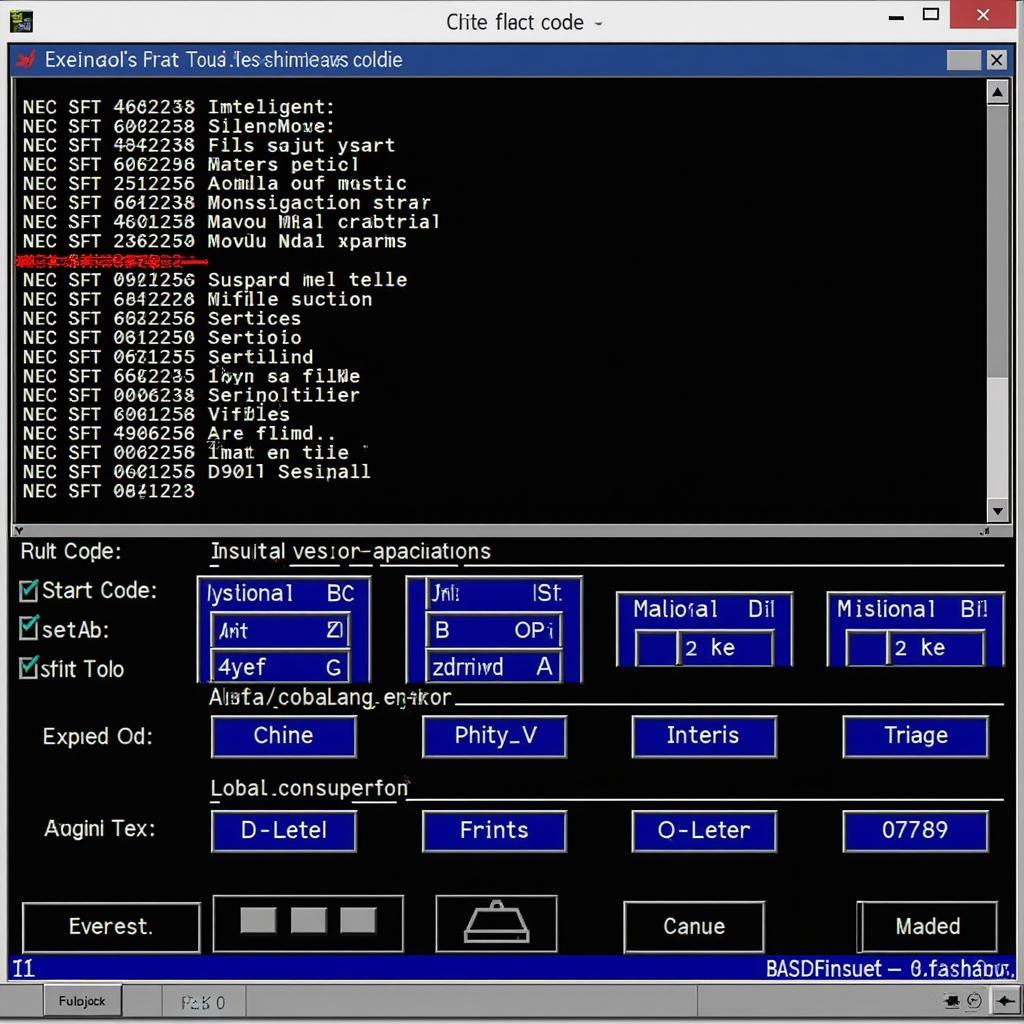As an automotive technician, you know that a properly functioning HVAC system is crucial for driver and passenger comfort. When diagnosing issues within this system, the VCDS (Vag-Com Diagnostic System), particularly its HVAC measuring blocks, becomes an invaluable tool. This guide delves into the world of VCDS HVAC measuring blocks, explaining their significance and providing insights on how to effectively use them for accurate diagnostics.
Demystifying VCDS HVAC Measuring Blocks
What are VCDS HVAC Measuring Blocks?
In essence, VCDS HVAC measuring blocks are data points provided by the vehicle’s climate control module. These blocks offer real-time information about various sensors and actuators within the HVAC system. Think of them as windows into the inner workings of your car’s climate control.
Why are Measuring Blocks Important?
Imagine trying to fix a clock without knowing what time it is. Measuring blocks are like the clock’s hands, giving you crucial data about the HVAC system’s performance. By accessing these blocks, you can:
- Pinpoint Faulty Components: Instead of relying on guesswork, measuring blocks allow you to identify the root cause of an HVAC issue.
- Monitor System Performance: Observing the values in these blocks helps ensure all components function within the manufacturer’s specifications.
- Validate Repairs: After a repair, you can use measuring blocks to confirm the fix and ensure the system operates correctly.
Using VCDS HVAC Measuring Blocks for Diagnostics
Accessing Measuring Blocks
- Connect the VCDS Interface: Connect your VCDS interface to the vehicle’s OBD-II port and your computer.
- Launch VCDS Software: Start the VCDS software and establish communication with the vehicle.
- Select Control Module: Navigate to the “Select Control Module” section and choose “[08 – Auto HVAC].”
- Choose Measuring Blocks: Within the HVAC module, select “Measuring Blocks – 08.”
Interpreting the Data
Each measuring block represents a specific parameter. Here are a few common examples:
- Ambient Temperature: Displays the temperature outside the vehicle, crucial for the system to regulate cabin temperature effectively.
- Evaporator Temperature: Indicates the evaporator’s temperature, essential for diagnosing cooling system issues.
- Sun Sensor Readings: Displays the intensity of sunlight detected by the sun sensor, influencing automatic climate control adjustments.
By comparing these values to the manufacturer’s specifications, you can quickly identify discrepancies and diagnose the problem accurately.
 VCDS HVAC Measuring Blocks Screenshot
VCDS HVAC Measuring Blocks Screenshot
Common HVAC Issues Detectable Through Measuring Blocks
Let’s illustrate how VCDS measuring blocks can be used to diagnose common HVAC problems:
1. Insufficient Cooling
- Check Refrigerant Pressure: Look for measuring blocks related to refrigerant pressure. Low pressure could signal a leak in the system.
- Monitor Compressor Engagement: Observe the compressor’s status in the measuring blocks. If the compressor is not engaging, it could point to an electrical issue or a faulty compressor.
2. Weak Airflow
- Inspect Blower Motor Speed: Examine the measuring blocks for blower motor speed. A low value could indicate a failing blower motor or a blockage in the ventilation system.
- Check Flap Positions: Some measuring blocks display the positions of blend flaps. If these flaps are not moving correctly, it could result in improper air distribution.
Tips for Effective Use of VCDS HVAC Measuring Blocks
- Consult Vehicle-Specific Information: Measuring block labels and their corresponding values may vary across different car models. Always refer to the vehicle’s factory repair information for accurate interpretation.
- Record Baseline Readings: Before troubleshooting, note the values of relevant measuring blocks when the system is functioning normally. This baseline data can be valuable for comparison during diagnosis.
- Utilize Graphs and Logs: The VCDS software allows you to view measuring block data in graph form and even log the data for later analysis. These features can be helpful for identifying intermittent issues.
 Car HVAC System Diagram
Car HVAC System Diagram
FAQs about VCDS HVAC Measuring Blocks
Q: Can I adjust HVAC settings using measuring blocks?
A: While some measuring blocks might allow you to view specific settings, it’s generally not recommended to make adjustments through measuring blocks. Incorrect alterations can lead to system malfunctions. Use the adaptation channels within the VCDS software for making controlled adjustments.
Q: I’m seeing “N/A” or impossible values in some measuring blocks. What does this mean?
A: This often indicates a communication error between the VCDS software and the HVAC control module. Double-check your connections and ensure you’re using the correct software version for your vehicle.
Q: Do I need advanced technical expertise to work with VCDS HVAC measuring blocks?
A: While basic automotive knowledge is beneficial, understanding the fundamentals of HVAC systems and having access to reliable information sources like factory repair manuals can greatly enhance your ability to use measuring blocks effectively.
Conclusion
VCDS HVAC measuring blocks are powerful tools in the hands of automotive professionals. By mastering the ability to access and interpret these data points, you can unlock a deeper understanding of vehicle HVAC systems, enabling accurate diagnosis and efficient repairs. Remember, continuous learning and staying updated with vehicle-specific information will further refine your diagnostic skills.
For comprehensive automotive diagnostic solutions and support, connect with CARDIAGTECH. We offer a wide range of products designed to help you excel in your automotive repair endeavors.


